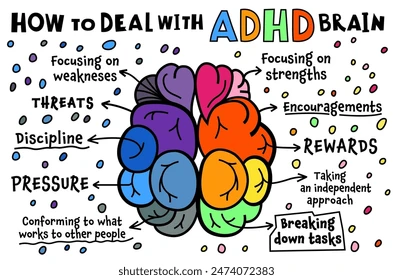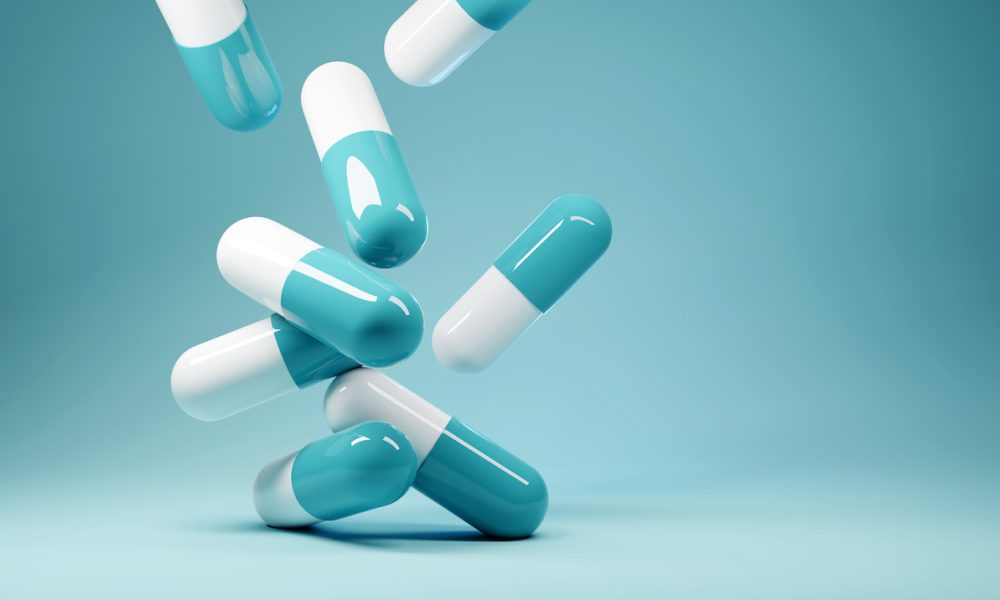The neurodevelopmental disorder known as Attention-Deficit/Hyperactivity Disorder (ADHD) impacts millions of adults and children globally. ADHD, which is characterized by symptoms including impulsivity, hyperactivity, and inattention, can have a major effect on day-to-day functioning, academic achievement, and interpersonal interactions. Medication is one of the best ways to control the symptoms of ADHD. This article explores the science underlying how ADHD drugs function, with a special emphasis on how they improve focus and manage impulsivity.
Knowing ADHD: Its Neurobiological Foundation
Understanding the underlying neurology of ADHD is crucial to understanding how ADHD medication work. Studies show that people with ADHD frequently have different brain morphologies and functions than people without the disease. The prefrontal cortex, anterior cingulate cortex, and basal ganglia are important brain regions related to executive function, impulse control, and attention.
In these regions, neurotransmitters—chemicals that carry messages throughout the brain—are essential. Specifically, the two neurotransmitters most strongly linked to attention and behavior regulation are dopamine and norepinephrine. These neurotransmitters are frequently seen in lower concentrations in people with ADHD, which can make it harder for them to focus, regulate their impulses, and deal with hyperactive behavior.
The Function of Medication in the Treatment of ADHD Stimulants and non-stimulants are the two main types of ADHD drugs. Although they do so in distinct ways, both kinds function by altering the brain’s neurotransmitter levels.
1. Medications that stimulate
Since several decades ago, stimulant medicines have been the most widely recommended treatment for ADHD. Among these drugs are:
Ritalin, Concerta, and other methylphenidates; amphetamines, such as Adderall and Vyvanse
Action Mechanism
The main way that stimulants function in the brain is by raising dopamine and norepinephrine levels. They use two primary strategies to accomplish this:
Reuptake Inhibition:
Stimulants prevent dopamine and norepinephrine from being reabsorbed. This improves communication between nerve cells by extending the time that neurotransmitters are available in the synaptic cleft, or the gap between neurons.
Neurotransmitter Release:
Stimulants also cause dopamine and norepinephrine to be released from the neurons where they are stored. The availability of these neurotransmitters is further increased by this extra release.
Impact on Impulse Control and Concentration
Focus and impulse control significantly improve when dopamine and norepinephrine levels rise. Better attention management and impulse control are made possible by increased dopamine activity in the prefrontal cortex, an area linked to executive functions.
Stimulant medicines have been demonstrated to dramatically increase attention span, decrease impulsivity, and reduce hyperactivity in both adults and children with ADHD. Many people say they are better able to focus on tasks, complete projects, and participate in conversations without interrupting.
2. Non-Stimulating Drugs
Non-stimulant drugs are available for people who don’t react well to stimulants or who have undesirable side effects. For ADHD, the most widely used non-stimulant drug is:
Strattera (atomoxetine)
Action Mechanism
Stimulants and atomoxetine function differently. Being a selective norepinephrine reuptake inhibitor (NRI), it largely raises norepinephrine levels in the brain without having a major impact on dopamine levels.
Impact on Impulse Control and Concentration
Atomoxetine can help with concentration and impulse control over time, even though it is generally thought to be less effective than stimulant drugs in terms of rapid symptom alleviation. According to certain research, atomoxetine may be especially helpful for those who already have anxiety problems because it is less likely to make them feel anxious than stimulants.
Medication’s Effect on Everyday Life
People with ADHD can experience life-changing changes as a result of taking medication for the illness. Beyond scholastic or professional endeavors, enhanced focus and impulse control can have a significant impact on interpersonal relationships and general quality of life.
1. Improved Academic Achievement
Medication can significantly impact a student’s academic experience if they have ADHD. They can finish homework, take part in class discussions, and study more efficiently when they have better attention. Students who take ADHD meds are more engaged and less prone to lose track of their work, according to numerous parents and instructors.
2. Improved Social Communication
One of the most important aspects of social relationships is impulse control. Relationship problems may result from children and adults with ADHD’s inability to control their impulses. ADHD drugs can help people manage social situations more skillfully by lowering impulsivity, which improves family interactions and friendships.
3. A greater sense of confidence and self-worth
People’s self-esteem frequently increases as a result of the positive effects of medication, which include increased achievement in social and academic contexts. A good self-image can be fostered by feeling more capable and in control, which is especially crucial for kids whose symptoms may have caused them to feel stigmatized or frustrated.
Factors and Adverse Reactions
Despite their potential for great effectiveness, ADHD medicines can have negative side effects. The following are typical stimulant drug adverse effects:
Diminished appetite
Sleeping difficulties or insomnia
elevated blood pressure or heart rate
Irritability or anxiety
Moreover, non-stimulant drugs may cause the following adverse effects:
Weariness or sluggishness
Feeling queasy
Mood fluctuations
In order to track any side effects and modify treatment programs appropriately, parents and patients must collaborate closely with healthcare professionals. It could take some time to find the proper drug and dosage, and what works for one person might not work for another.
The Value of a Whole-System Approach
Although medication is an essential part of treating ADHD, it works best when used in conjunction with other techniques. The advantages of medicine can be greatly increased by behavioral treatment, educational assistance, and lifestyle modifications.
1. Counseling for Behavior
Other behavioral therapies, such as cognitive-behavioral therapy (CBT), can assist people in learning coping mechanisms and symptom management techniques. Specific ADHD-related issues including organization, time management, and emotional control can be addressed in therapy.
2. Assistance with Education
Schools can be quite helpful in helping students with ADHD. 504 Plans or Individualized Education Plans (IEPs) can offer adjustments that support students’ academic success. This could be longer exam times, less homework assignments, or a controlled setting with fewer distractions.
3. Modifications to Lifestyle
ADHD medication symptoms can be further alleviated by adopting a healthy lifestyle. For general well-being, a balanced diet, regular exercise, and enough sleep are necessary. Particularly, exercise has been demonstrated to improve mood and attentiveness, which makes it a great addition to medicine.
In conclusion
For those with ADHD, drugs are essential for controlling symptoms and enhancing concentration and impulse control. People and their families can choose the best course of therapy if they have a better grasp of how these drugs function and how they affect brain chemistry. Notwithstanding the fact that drugs can have a lot to offer, they work best when combined with counseling, educational support, and good lifestyle choices.
People can succeed and feel more fulfilled in their personal, professional, and academic life by adopting a holistic approach to treating ADHD. Each person’s path to managing ADHD is different, but with the correct tools and assistance, it is possible to overcome the obstacles and succeed.




